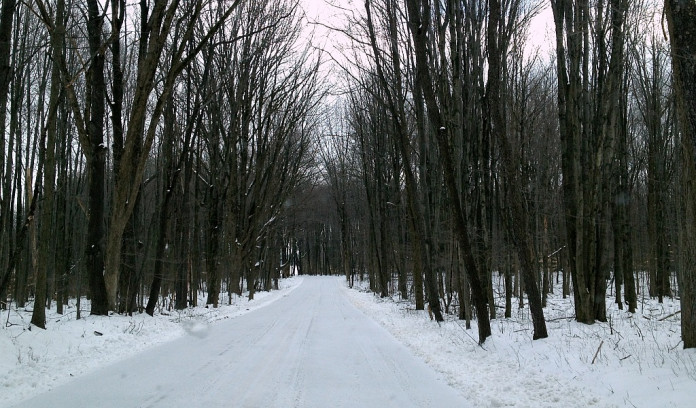SALEM, Ohio — No one can predict the weather, but it hasn’t stopped us from trying, particularly when it comes to snow and cold temperatures.
What the winter weather will look like depends a lot on who you ask. Based on long-range outlooks from the National Oceanic and Atmospheric Administration, Ohio and Pennsylvania are leaning toward above-normal temperatures, but according to the Farmers Almanac, we can expect cold, stormy weather this winter.
The technology used in modern forecasting has become much more sophisticated in recent years, making them more representative of the actual climate system, said Johnna Infanti, a meteorologist with NOAA’s Climate Prediction Center. But some people still prefer traditional weather forecasting methods, like those used in the Farmers Alamanc or enshrined in old wives’ tales.
Even the meteorologist admits that Mother Nature can always throw some curveballs.
“There’s always something we don’t know about nature,” Infanti said.
The science. To make their seasonal outlooks, NOAA meteorologists rely on a suite of dynamical climate models from modeling centers across the U.S. and Canada called the North American Multi-Model Ensemble. They also use models from international modeling centers, including the European Centre for Medium-Range Weather Forecasts model.
“Those are just computer models that use a lot of equations to simulate what the climate could look like,” Infanti said.
They also use statistical models to look at the influence of factors such as sea surface temperatures, climate change trends, soil moisture levels and active climate states, such as El Niño events.
NOAA updates its 90-day seasonal outlooks around the middle of each month and they are available online at nws.noaa.gov/predictions.php.
They use temperature and precipitation maps to show the probability of above-normal, near-normal or below-normal conditions across the country. For those comparisons, normal conditions for any given region are determined using data from the 30-year period from 1991 through 2020, Infanti said.
According to NOAA Climate Prediction Center’s outlook for December through February, the chances of a warmer-than-average winter are higher than the chances of a cooler-than-average winter across much of the northern part of the country. Most of Ohio is predicted to have below-average amounts of precipitation.
NOAA’s winter weather outlook falls in line with trends for the past couple of years. The last two winters in Ohio have displayed what meteorologists call “above-normal” temperatures. According to the State Climate Office of Ohio, temperatures were between 4-7 F warmer than normal this past winter.
The old-fashioned approach. Sandi Duncan, managing editor for the Farmers Almanac, said the publication continues to use an analog forecasting formula developed by the almanac’s founding editor in 1818. The formula is proprietary, so the almanac does not share the details.
The weather prediction rules the Farmers Almanac uses have been updated over the years but they continue to rely on astronomical and mathematical factors including sunspot activity, the tidal action of the moon, the position of the planets and lunar cycles, Duncan said.
“The past several years we’ve really been concentrating a lot on the moon,” she said. “We’re looking at lunar cycles and how they line up with weather patterns years ago.”
The Farmers Almanac includes long-range forecasts for all four seasons, however, the winter forecast seems to attract the most interest because people want to be prepared for winter weather, Duncan said.
“People still depend on us,” she said.
The staff of the Farmers Almanac has to start working on long-range forecasts as much as two years in advance to meet production schedules. Then before finalizing their forecasts, they refer to NOAA forecasts to see how El Niño or La Niña climate patterns might influence their predictions and then make appropriate adjustments, Duncan said.
“In fact, in this year’s almanac, we did say that, based on the idea that El Niño was forming for winter, we do feel that the forecast will be pretty much spot on.”
Although the Farmers Almanac reports on weather folklore such as woolly worms and persimmon seeds, the publication’s long-range prediction formula does not take such signs into account. “We do respect the fact that weather folklore was based on years and years of observation,” Duncan said.
She questions the accuracy of those nature signs for long-range forecasting, but some observations people have made over the years can be helpful for short-term forecasts. For instance, a halo around the moon is said to indicate rain or snow on the way. Those halos appear because of ice crystals that form when high altitude temperatures are low, she pointed out. So, the precipitation prediction often holds true.
People today are more connected to their cell phones and computers than the natural world, so they’re less likely to connect signs in nature to weather phenomena, Duncan added.
“Let’s face it, years ago people were just much more observant of nature,” she said.
Even if they don’t have a scientific basis, it can be fun to see how accurate folklore predictions can be, Duncan said. She doesn’t consider woolly worm predictions to be particularly accurate, but she said she’s intrigued by the persimmon seed prediction method.
Cutting open a persimmon seed and taking a look at the cotyledon is said to give the winter forecast. A spoon shape indicates lots of snow, a fork points to mild weather and knife means the winter will be harsh. Feedback from almanac readers indicates many people were seeing spoons this year, so the persimmon prediction seems to point toward a wet, snowy winter.
However, Duncan cautions that it’s important to use a local persimmon if you’re looking for a forecast. Otherwise you’ll just end up with a forecast for the place the persimmon was grown.











Where do persimmons grow in Ohio?
I believe they mainly grow in southern Ohio.